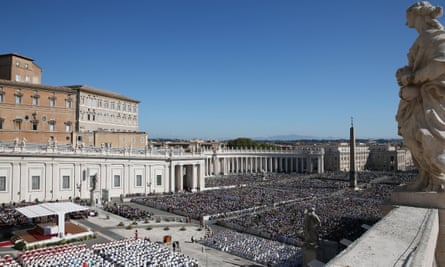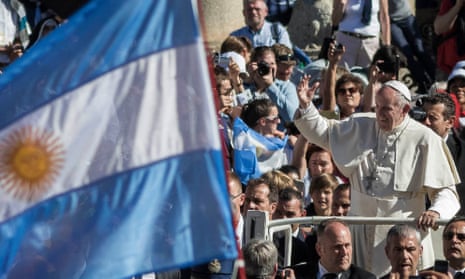The Pope has proclaimed seven further saints, including the Argentinian “gaucho priest” who served as an inspiration for the pontiff, and two people who were killed because of their faith.
Portraits of the seven hung high among the columns of Saint Peter’s Basilica at the Vatican on Sunday, where the pontiff blessed relics of the latest canonisations at an open-air ceremony attended by about 80,000 people.
Many among the crowds were Argentinians, some clutching little statues of poncho-wearing José Gabriel del Rosario Brochero.
Born in 1840 in the province of Cordoba, Brochero spent his days ministering to the poor and the sick, travelling the region on muleback and building church schools.

Pope Francis has praised Brochero as having had the “smell of his sheep” on him, a phrase the pontiff has used in the past to describe the best pastors – those who mingle with their congregation and share their troubles.
Brochero cared for the sick during a cholera epidemic in 1867 and would go on to contract leprosy, reportedly after sharing a gourd of the herbal tea mate with a person who had the disease. Mate is a drink Francis often sips when offered to him by pilgrims in the crowds.
In Argentina, tens of thousands of pilgrims defied lightning and heavy rain for an overnight outdoor vigil in Villa Cura Brochero, where the “gaucho priest” once lived. They followed the Vatican ceremony on giant television screens.
The youngest to be canonised on Sunday was Jose Sanchez del Río, a 14-year-old who was killed in 1928 in Mexico after refusing to renounce his faith during the Cristero struggle between Catholics and the anti-clerical Mexican government of the time.

Salomone Leclercq also died defending his faith. Born in 1745 in France to a family of merchants, he entered the Institute of the Brothers of the Christian Schools – known as the De La Salle Brothers – where he served as a teacher.
He was run through with a sword during the French revolution after refusing to take the oath of allegiance to the new French government.
France’s second new saint is the mystic Elizabeth of the Trinity, who died aged 26 of Addison’s disease in 1906. A gifted pianist, she reportedly refused several offers of marriage to join the Barefoot Carmelites near her house and undertake a life of contemplation, where she dedicated herself to prayer and spiritual writings.
Also canonised on Sunday was Italian Alfonso Maria Fusco, a priest from the southern city of Salerno. Born to a farming family in 1839 he went on to found the Congregation of the Sisters of Saint John the Baptist, known as Baptistine Sisters.
Fellow Italian Lodovico Pavoni was also made a saint. Born in 1784 in Brescia, he founded the religious congregation Sons of Mary Immaculate and taught the poor and destitute trades to help them put bread on the table and faith to help them enter heaven.
The seventh canonisation was Spanish bishop Manuel González García. Born in 1877, he founded the Congregation of the Eucharistic Missionaries of Nazareth as well as the Disciples of Saint John and the Children of Reparation.
He enlisted in the seminary of Seville at 12, and it was there that he wrote: “If I would be born a thousand times; a thousand times I would be a priest.”
